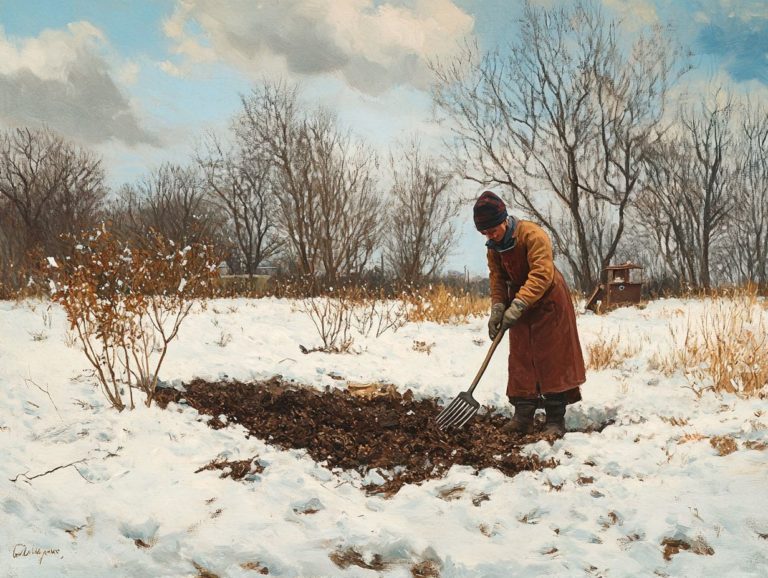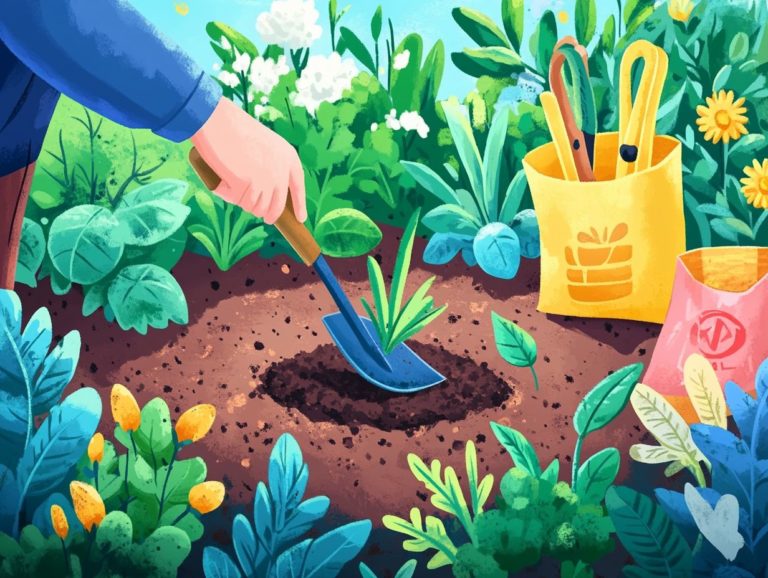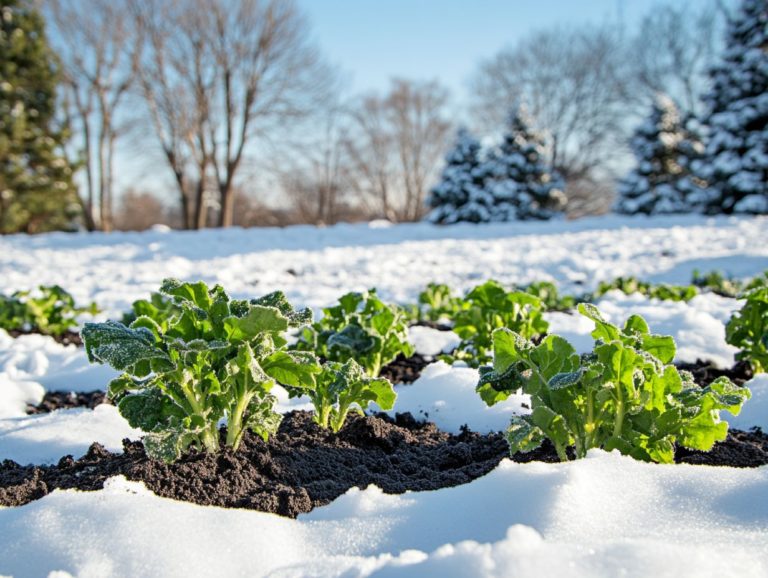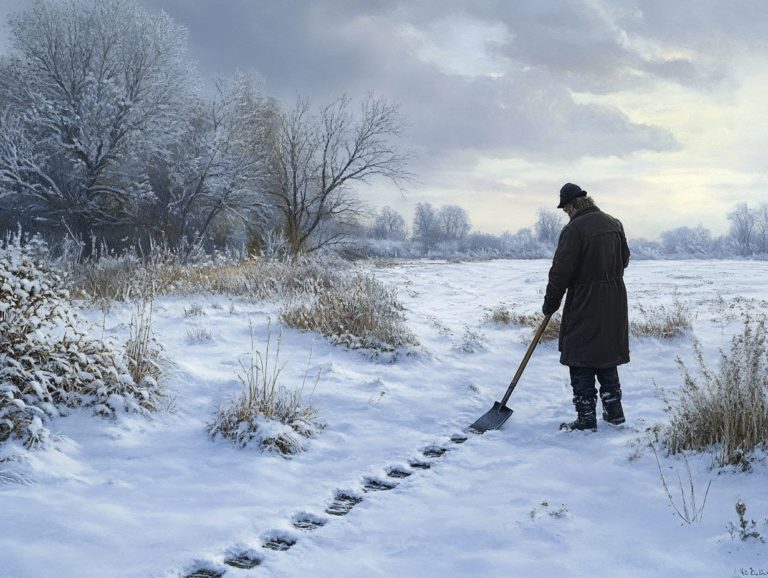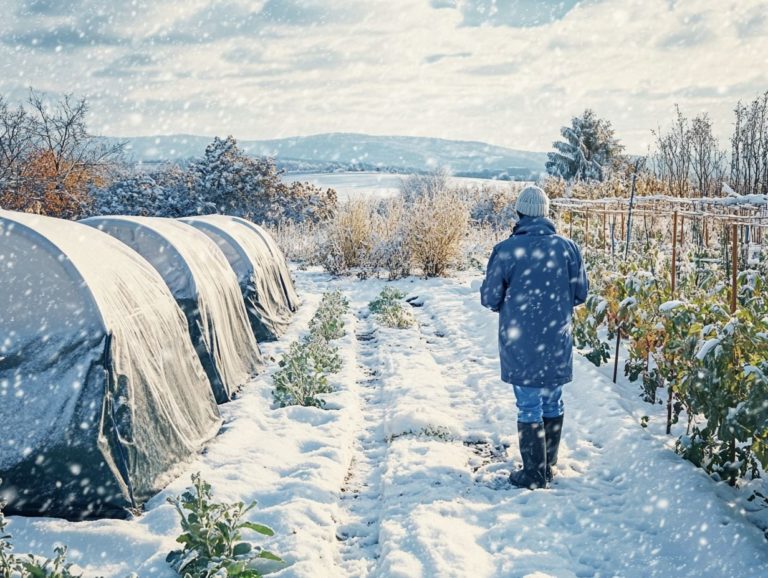What to Know About Soil Fertility in Cold Climates
Soil fertility in cold climates presents unique challenges and exciting opportunities for gardeners and farmers.
Understanding the factors that influence soil health, such as temperature changes, moisture levels, and nutrient availability, is essential for your success.
This guide explores effective methods to test and enhance soil fertility. You’ll learn about fertilization techniques and the benefits of composting.
It also covers how to choose crops that thrive in colder soils and strategies to prevent erosion and nutrient loss.
Whether you’re a seasoned gardener or a curious beginner, this information helps you cultivate rich soil, even in chilly environments!
Contents
- Key Takeaways:
- Understanding Soil Fertility in Cold Climates
- Testing Soil Fertility
- Boost Your Soil Fertility in Cold Climates!
- Choosing the Right Crops for Cold Climates
- Protecting Soil Fertility in Cold Climates
- Frequently Asked Questions
- What should I know about soil fertility in cold climates?
- How do freezing temperatures affect soil fertility?
- What can I do to improve soil fertility in cold climates?
- How can I protect my soil from the effects of a short growing season?
- What are some common nutrient deficiencies in cold climates?
- Can I still use chemical fertilizers in cold climates?
Key Takeaways:
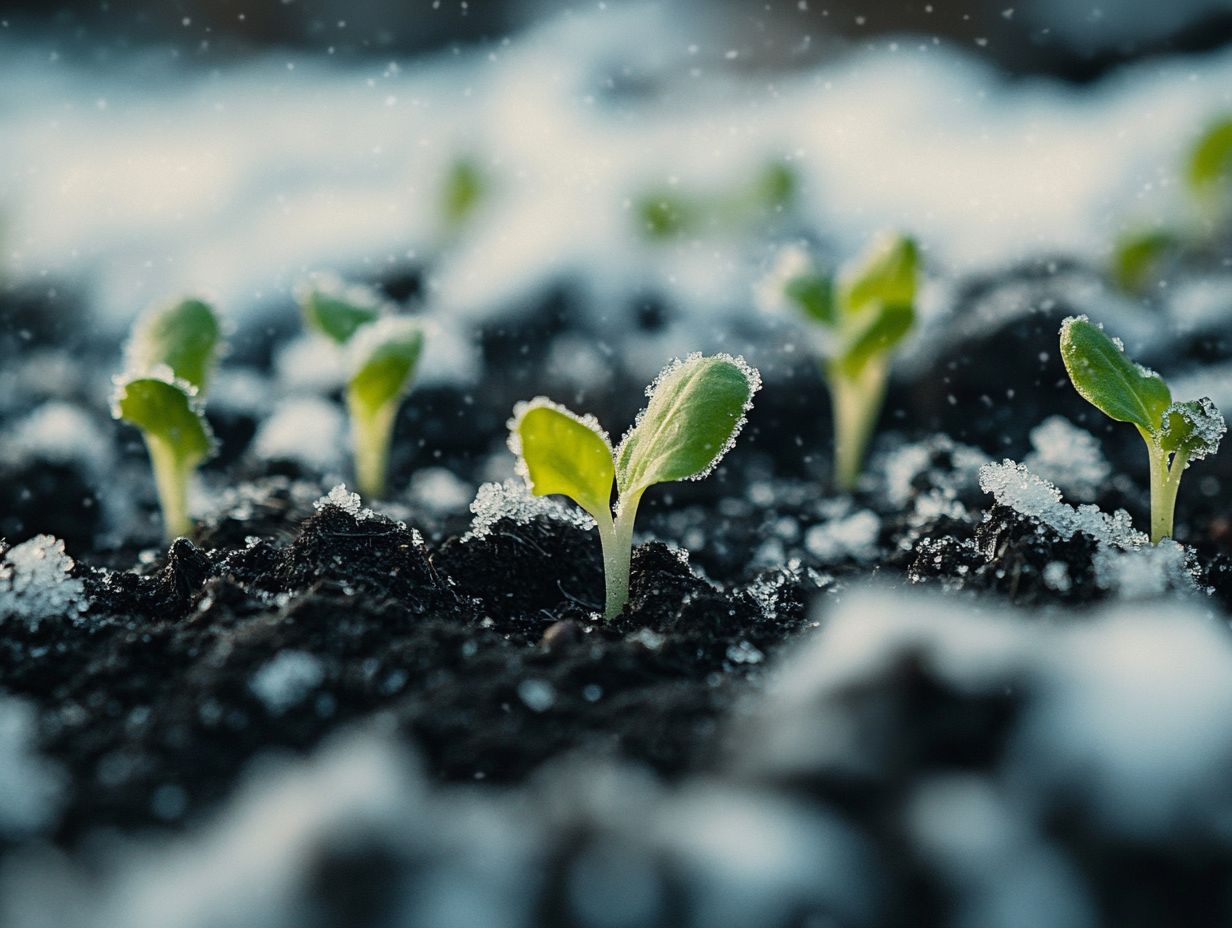
- Soil fertility in cold climates is affected by temperature, moisture, and nutrients.
- Testing soil fertility is crucial for understanding nutrient levels and pH balance.
- To improve soil fertility, consider effective fertilization methods, cover crops, and composting.
Understanding Soil Fertility in Cold Climates
Understanding soil fertility in cold climates is key to successful gardening. The chill in the air affects soil characteristics and plant health.
Key factors include soil structure, moisture retention, and nutrient availability. These factors are vital for enhancing soil fertility.
Organic matter and soil microorganisms are also essential. They support root growth and improve drainage.
Addressing these elements helps ensure that your plants receive optimal hydration during the growing season.
Factors Affecting Soil Fertility in Cold Climates
Moisture levels, nutrient availability, soil structure, frost, and erosion significantly impact soil fertility. Recognizing how these factors interact is essential.
Moisture levels affect nutrient absorption. Too much water can wash away essential minerals, while too little can stunt growth.
Nutrient availability changes with temperature and season. Crop rotation is an effective practice that helps retain moisture.
Soil structure is critical; loose, well-aerated soil promotes root growth, while compacted soil can hinder it.
Understanding frost’s effects on microbial activity and how erosion depletes topsoil allows you to take preventive action. This knowledge helps your garden thrive in challenging climates.
Testing Soil Fertility
Testing soil fertility is essential for gardeners who want to enhance plant growth and health. In colder climates, nutrient availability can be limited, and soil characteristics can differ widely.
By assessing your soil, you can make informed decisions that lead to thriving plants and a flourishing garden. Consider the benefits of using cover crops!
Methods for Assessing Soil Nutrients
You have a variety of methods at your disposal for assessing soil nutrients, from soil testing kits and testing done by experts in a lab to visual assessments. Each of these approaches offers valuable insights into nutrient content, including vital elements like nitrogen, phosphorus, and potassium.
Soil testing kits are a fantastic option; they re user-friendly and often found at garden centers. This means you can conduct quick checks right at home. However, while convenient, they may not provide the same level of precision as lab results.
On the flip side, laboratory analysis provides detailed and accurate measurements. But it requires you to send samples away and wait for the results a potentially inconvenient process.
Visual assessments can also be a useful tool, especially for seasoned gardeners like you. Your experience can help spot potential lack of nutrients. Just remember, this method can be a bit subjective.
Understanding nutrient content is crucial for enhancing soil fertility. This ensures your plants receive the essential elements they need for robust growth and productivity.
Boost Your Soil Fertility in Cold Climates!
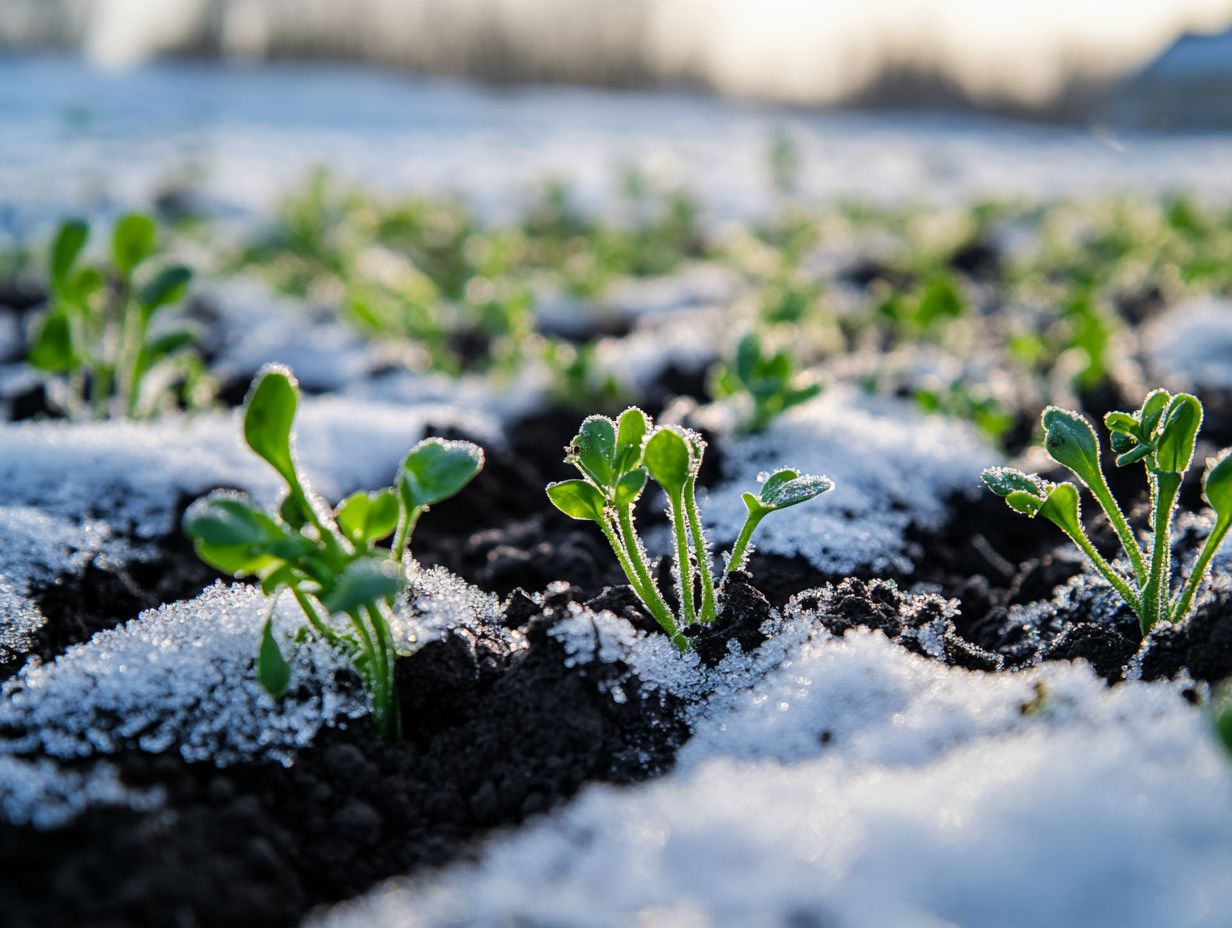
Enhancing soil fertility in cold climates calls for a thoughtful strategy. Incorporating organic matter is a game-changer for your soil! It enriches the soil and boosts its nutrient content.
Enhancing moisture retention is also important, as it helps sustain plant growth despite the chill in the air. Don t overlook the importance of effective drainage improvements. These measures are essential for fostering a thriving environment for both plants and soil microorganisms.
Effective Fertilization Techniques
Effective fertilization techniques in cold climates require your thoughtful application of fertilizers. Use options like bone meal and other organic amendments to enhance nutrient availability and promote strong plant growth.
Timing plays a critical role in these methods. Applying fertilizers too early or too late may undermine their effectiveness. Many gardeners in chilly regions discover that using slow-release chemical fertilizers in early spring offers a steady supply of nutrients as temperatures begin to rise.
Incorporating organic amendments like compost or well-rotted manure not only boosts soil health but also reduces your reliance on synthetic products. These organic materials improve soil structure and encourage beneficial microbial activity, fostering a balanced ecosystem that supports plant vitality throughout the growing season.
Composting in Cold Climates
Composting in cold climates may present its challenges, but the rewards are substantial. It enriches your soil with organic matter and boosts the activity of essential soil microorganisms. Both of these are crucial for maintaining soil health and supporting effective gardening techniques.
In these chilly regions, temperatures frequently dip below freezing, which makes traditional composting methods less effective. However, by grasping the intricacies of the composting process, you can successfully produce rich compost even when the temperatures drop.
The secret lies in maintaining an active compost pile. This involves thoughtfully selecting materials like kitchen scraps, grass clippings, and shredded leaves to effectively balance nitrogen and carbon. For the best results, it s vital to insulate your pile with coverings such as straw or tarps to retain heat. This ensures moisture levels and microbial activity remain optimal.
In the end, a well-managed compost system enhances soil fertility, paving the way for a flourishing garden.
Choosing the Right Crops for Cold Climates
Selecting the right crops for cold climates is crucial for you as a gardener. It’s important to consider factors such as soil fertility and moisture retention. These elements play a vital role in ensuring successful growth even in less-than-ideal conditions.
Start implementing these techniques today for a vibrant garden tomorrow!
Plants that Thrive in Cold Soil
Certain plants thrive in cold soil. They benefit from specific nutrient needs like nitrogen and phosphorus, which are vital for their growth in challenging conditions.
Robust options include kale, Brussels sprouts, and winter rye. It’s essential to provide a balanced mix that supports their development during the colder months. For instance, kale significantly benefits from added potassium and calcium, enhancing leaf quality and fortifying the plant.
Incorporating soil amendments like compost can improve drainage and fertility, ensuring strong root systems. Consider techniques like mulching to insulate the soil and maintain a consistent temperature, promoting healthier growth even as temperatures drop. By employing these proper care methods, you can look forward to a bountiful harvest even in frigid climates.
Protecting Soil Fertility in Cold Climates
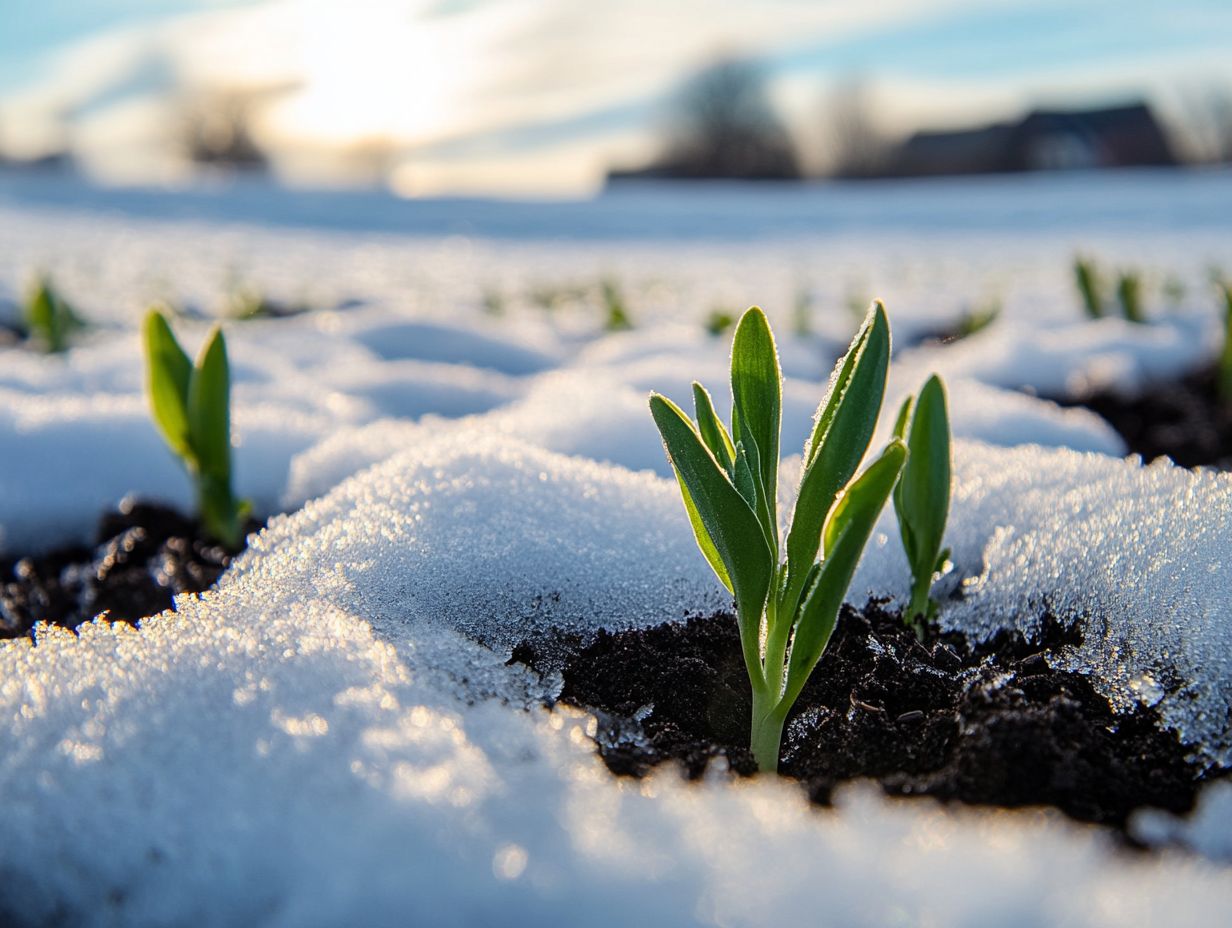
Protecting soil fertility in cold climates is essential for ensuring garden productivity. Implement strategies to minimize erosion and nutrient loss, especially during winter months when your soil faces harsh conditions.
By testing soil fertility and enhancing drainage, you can create a thriving garden environment even in the most challenging weather.
Preventing Soil Erosion and Nutrient Loss
Preventing soil erosion and nutrient loss is essential in cold climates. Here, harsh weather can quickly compromise soil structure and diminish moisture retention. Preserving fertile soil boosts agricultural productivity and supports the overall health of the ecosystem.
You can effectively combat these challenges by employing methods like contour farming, a method that follows the hills and valleys of the land to prevent soil erosion. Planting cover crops is a smart move to shield bare soil, mitigating wind and water erosion.
Enhancing soil structure through organic amendments, such as compost and mulch, significantly improves the soil’s capacity to retain moisture and nutrients. By embracing these strategies, you can cultivate resilient soils that withstand harsh climate conditions typical of colder areas.
Winter Cover Crops for Soil Health
Winter cover crops are a fantastic choice for elevating soil health in cold climates. They enhance moisture retention and enrich the soil with organic matter, making a noticeable difference.
These crops are essential for preventing erosion during harsh winter months, ensuring your precious topsoil stays intact amid heavy snowfall or rain. Their root systems work wonders to improve soil structure, promoting better aeration and water infiltration.
When you incorporate these cover crops into the soil come spring, they release valuable nutrients like nitrogen and phosphorus. It boosts crop growth and encourages biodiversity, fostering a more resilient farming ecosystem.
Frequently Asked Questions
What should I know about soil fertility in cold climates?
Cold climates can significantly impact soil fertility because freezing temperatures and short growing seasons can limit nutrient availability. It’s important to understand these factors and how they affect the health of your soil and plants.
How do freezing temperatures affect soil fertility?
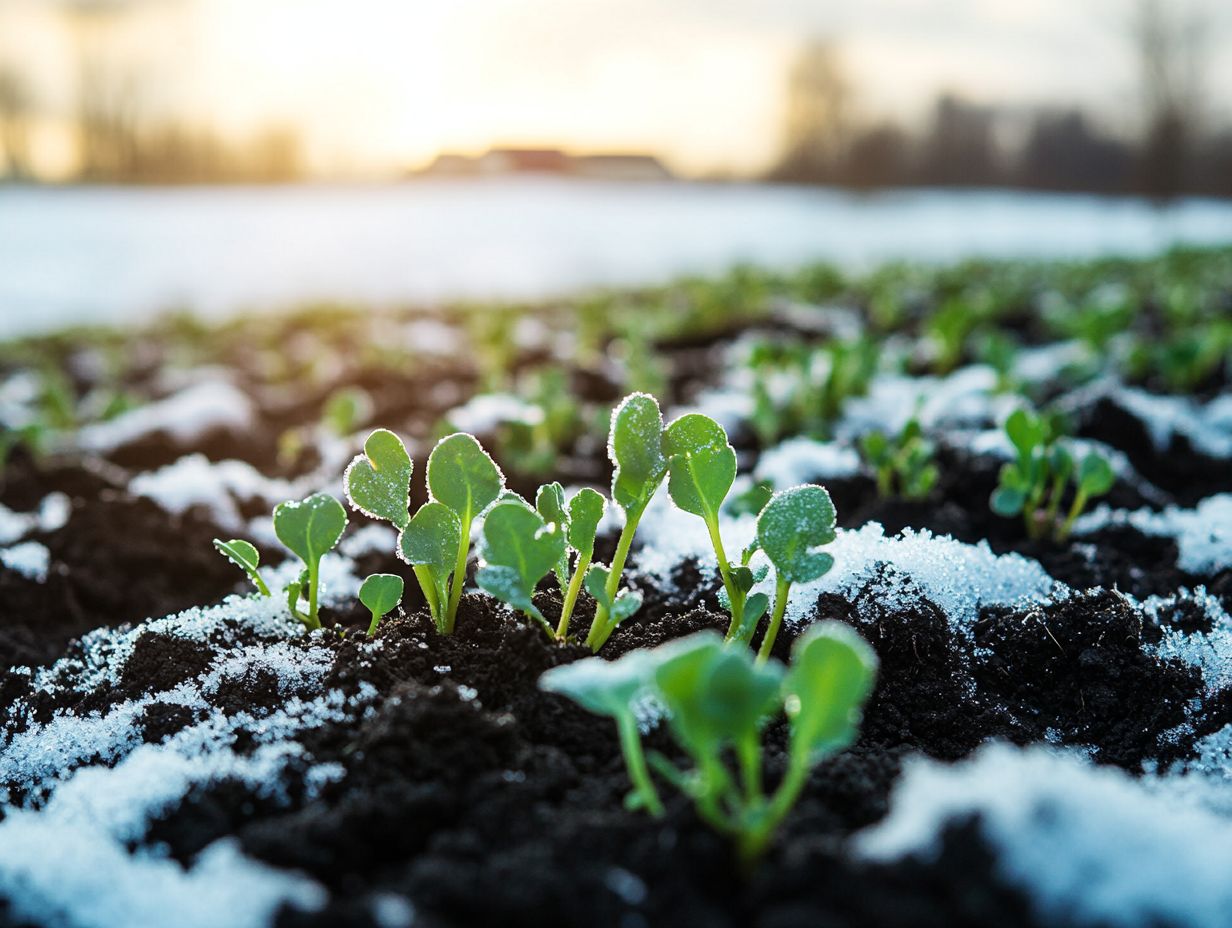
Freezing temperatures can cause soil to expand and contract, leading to soil compaction. This makes it difficult for plant roots to grow and access nutrients, resulting in reduced soil fertility. Additionally, freezing temperatures can kill beneficial microorganisms and earthworms that help break down organic matter and improve soil health.
What can I do to improve soil fertility in cold climates?
Adding organic matter is one of the best ways to boost soil fertility in cold climates. This transforms your soil into a nutrient powerhouse!
Organic matter improves soil structure and encourages the growth of beneficial microorganisms. Compost, manure, and cover crops are all excellent sources.
How can I protect my soil from the effects of a short growing season?
A short growing season limits the time that plants can absorb nutrients from the soil. To protect your soil, use mulch to insulate it and help retain moisture and nutrients.
Use cold frames to give your plants more time to grow and absorb nutrients!
What are some common nutrient deficiencies in cold climates?
Cold climates can lead to nutrient deficiencies, especially for vital nutrients like nitrogen, phosphorus, and potassium. Freezing temperatures can reduce the activity of soil microorganisms that release these nutrients from the soil.
Act now to replenish vital nutrients with compost or organic fertilizers before the next growing season!
Can I still use chemical fertilizers in cold climates?
Chemical fertilizers can still be used in cold climates, but they may not be as effective as in warmer areas. The cold weather slows down the nutrient uptake by plants.
Carefully follow recommended application rates and consider using organic fertilizers alongside chemical ones to enhance soil health and fertility.

